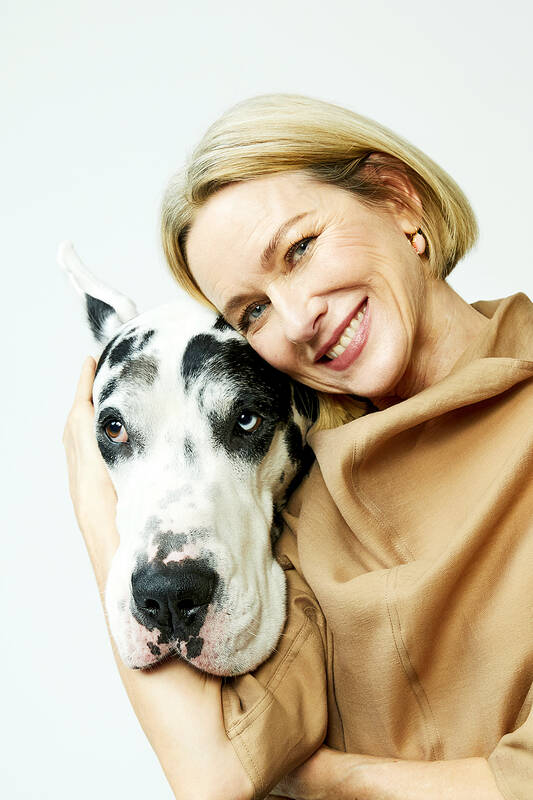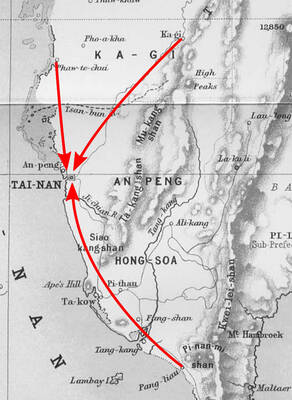The star of The Friend has the loping stride of Robert Mitchum and the droopy, melancholy eyes of Peter Lorre. He has those classic Hollywood features — instantly accessible, forever unknowable — and when he walks down the street with his co-stars, Naomi Watts and Bill Murray, people’s heads turn.
“People would go, ‘Hey, get a load of the blonde,’” Murray says before acting out a double take. “Get a load of THE DOG!’”
Bing, the harlequin Great Dane of The Friend, is the latest in a long line of four-legged big-screen breakout stars. But unlike canine idols before him, Bing is gigantic. Toto would fit in his paw and Asta could comfortably sit on his head. David Siegel, co-director of The Friend, estimates Bing has a good 18 kilograms on Watts. Gentle as he is, Bing looks more like one of those hulking walkers in Star Wars than Lassie.

Photo: AP
The Friend isn’t your average dog movie either. Adapted from Sigrid Nunez’s 2018 National Book Award-winning novel, it stars Watts as Iris, a New York author who reluctantly inherits Apollo (Bing), the cherished companion of her late mentor Walter (Murray). Their cramped coexistence is challenged not just by the pet policy of Iris’ building but by Apollo’s own grief, too.
“How creatures find each other — what we share with other humans but also animals — that’s where the solace comes from,” says Siegel. “We cast Bing to some degree for his countenance, just like we cast actors for their countenance. Does he have a face that can look sad? Does he look happy when he’s happy?”
PHOTO SHOOTS AND MEDIA APPEARANCES
On a recent spring day, Bing did indeed look happy, if a little worn out. He had spent the day at photo shoots and other media appearances, with his owner, Beverly Klingensmith, shuttling him around Manhattan in a van. Bing’s duties, which included appearances on The Tonight Show and The View, were arguably more demanding of him than his biped co-stars. In between interviews, he warmly nuzzled a reporter while a grateful publicist compared him, given the pressures of a movie marketing, to an emotional support animal.
“At one of the Q&As, every time he’d move, the audience would go, ‘Awww,’” said Klingensmith. “Bill was like: ‘I told them not to bring out the dog yet.’”
But Murray and Watts have grown accustomed to being upstaged by their co-star. Not only that, as proud “dog people,” they’re delighted by Bing and praise him as not just a good boy but a fine actor. Murray has long maintained he wouldn’t trust anyone that a dog didn’t like.
“Dogs have a pretty good sense of who’s OK,” Murray muses. “I’ve met many thousands of people and there’s a real high number of people I wouldn’t trust. But as far as dogs, there’s maybe only been, like, three.”
For writer-directors Scott McGehee and Siegel, the filmmaking duo of The Deep End and What Maisie Knew, the prominence of the dog in Nunez’s book — a black-and-white Great Dane graces the cover — was both a great hook for the movie and the biggest challenge in making it. When they contacted trainer Bill Berloni, he urged them to consider another breed.
“When you put that dog on the cover of a book that wins the National Book Award, it’s got to be that dog,” says Siegel, laughing. “Bill was like, ‘Can’t it be another dog?’ We were like (holding up imaginary book): ‘Look.’”
An extensive search ultimately led them to an obedience-training club in Des Moines, Iowa. There, they found Bing and Klingensmith, who runs a kennel on a 10-acre property in Newton, Iowa, with her husband. The directors, having already looked coast-to-coast, stopped their search immediately.
“We kind of knew right away,” McGehee says. “He was a little too young at the time. We thought we were going to be making the movie that spring. Then the pandemic hit. So he aged beautifully right into the role.”
“If you see George Clooney in person, it’s like he attracts light in a special way,” adds McGehee. “Bing has that.”
As much as Berloni tried to prep Klingensmith on what lay ahead, she acknowledges, while in the midst of a hectic publicity tour, that she didn’t fully realize what she was getting into. But Bing responded well to the filmmaking process. (A representative of the American Humane Society was also present on set.)
“He loves to do things. The days where he had really active behaviors were his favorites,” says Klingensmith. “And what dog doesn’t want to spend 24/7 with their owner?”
Special care was taken to acquaint Bing and Watts — not just to bring them closer but so that Watts would feel comfortable keeping such a powerful animal safe on the streets of New York. A huge amount of The Friend unfolds with just the two of them interacting — a testament to both Watts’ subtle, quicksilver powers and to Bing’s expressiveness.
“He was a very curious dog and he did really look at you with attention. I found him a pure delight to work with,” Watts says. “The scene when I break down, if he hears crying, he’s a little spooked. He picks up on everything. He’s like: ‘Is something wrong?’”
CAN A DOG ACT?
Can a dog act? It’s a question that might not have bedeviled philosophers or animal-rights activists, but that anyone watching a movie like The Friend is sure to ponder. Murray, who voiced one in Wes Anderson’s Isle of Dogs, is an ardent believer.
“The dog gives an amazing performance,” Murray says. “When I first saw some of the cut footage, I realized the dog had been listening to everything that’s going on in every scene. The dog’s reactions to what’s happening in the scene is better than many actors or actresses I’ve worked with. Many. Not Naomi.”
Anytime a dog is pushed to the center of a movie, one inevitably worries for their fate. (There’s even a Web site, www.DoestheDogDie.com, committed to warning moviegoers.) As a critic long traumatized by films like Old Yeller and Umberto D., the Will Smith movie I Am Legend even once prompted me to write an open letter to Hollywood, pleading it to spare the puppy dogs.
The Friend plays with that tradition, bookending the movie with reflections on dog movies and an early assurance that — unlike in the book — the dog makes it this time. “Very early on, we were like: We cannot kill the dog,” McGehee says.
For a movie that’s not so much about locating a solution to grief as it is about finding comfort on your way through it, it’s one concession — a bone — to those who have suffered enough.
“People have lost dogs and felt like this. People have lost people and felt like this, and their only solace has been a dog. Or their only solace has been a person,” Murray reflects. “The movie really bangs on both sides of the animal kingdom.”

The Taipei Times last week reported that the rising share of seniors in the population is reshaping the nation’s housing markets. According to data from the Ministry of the Interior, about 850,000 residences were occupied by elderly people in the first quarter, including 655,000 that housed only one resident. H&B Realty chief researcher Jessica Hsu (徐佳馨), quoted in the article, said that there is rising demand for elderly-friendly housing, including units with elevators, barrier-free layouts and proximity to healthcare services. Hsu and others cited in the article highlighted the changing family residential dynamics, as children no longer live with parents,

Oct 20 to Oct 26 After a day of fighting, the Japanese Army’s Second Division was resting when a curious delegation of two Scotsmen and 19 Taiwanese approached their camp. It was Oct. 20, 1895, and the troops had reached Taiye Village (太爺庄) in today’s Hunei District (湖內), Kaohsiung, just 10km away from their final target of Tainan. Led by Presbyterian missionaries Thomas Barclay and Duncan Ferguson, the group informed the Japanese that resistance leader Liu Yung-fu (劉永福) had fled to China the previous night, leaving his Black Flag Army fighters behind and the city in chaos. On behalf of the

I was 10 when I read an article in the local paper about the Air Guitar World Championships, which take place every year in my home town of Oulu, Finland. My parents had helped out at the very first contest back in 1996 — my mum gave out fliers, my dad sorted the music. Since then, national championships have been held all across the world, with the winners assembling in Oulu every summer. At the time, I asked my parents if I could compete. At first they were hesitant; the event was in a bar, and there would be a lot

Smart speakers are a great parenting crutch, whether it be for setting a timer (kids seem to be weirdly obedient to them) or asking Alexa for homework help when the kids put you on the spot. But reader Katie Matthews has hacked the parenting matrix. “I used to have to nag repeatedly to get the kids out of the house,” she says. “Now our Google speaker announces a five-minute warning before we need to leave. They know they have to do their last bits of faffing when they hear that warning. Then the speaker announces, ‘Shoes on, let’s go!’ when